Premium Bulk Dried Black Limes for Export to Global Markets
GENERAL DATA
Plant Parts: Leaves, fruits, fruit skin, fruit kernel
Cultivation Mode: Wild collection/ Cultivated
In Manufacturing: Pharmaceutical, Oil, Extract, Soft drink, Alcoholic drink, Herbal Tea, Spices
Foods: All foods
🍋 Industries That Use Dried Lime (Limoo Omani)
Derived from Citrus aurantiifolia (Christm.) Swingle
Dried Lime, commonly known as Limoo Omani, is made by sun-drying whole sour limes, typically after boiling or blanching. It’s a traditional product native to Iran, Iraq, and the broader Gulf region, with a sharp, tangy, and smoky flavor profile. Beyond culinary use, Limoo Omani holds value in pharmaceutical, nutraceutical, and aromatic industries.
1. Food & Culinary Industry
Limoo Omani is a signature souring agent and flavor enhancer in Middle Eastern and South Asian cuisine.
-
Popular in:
-
Gourmet ethnic markets
-
Ready-made spice sachets
-
Traditional cooking kits
-
✅ Available in whole dried form, crushed, or finely ground powder.
2. Herbal & Nutraceutical Industry
Limoo Omani retains beneficial phytochemicals from the lime, especially when gently dried.
-
Digestive stimulant and appetite booster
-
Used in traditional medicine for:
-
Detoxification
-
Cold and cough relief
-
Indigestion and bloating
-
-
High in:
-
Vitamin C, citric acid, and flavonoids
-
✅ Appears in herbal infusions, teas, and traditional gut-health blends.
3. Tea & Functional Beverage Industry
Dried lime is used as an ingredient in herbal teas and infusions for its tangy aroma and antioxidant effects.
4. Cosmetic & Skincare Industry
Rich in antioxidants and citric acid, dried lime is used for:
-
Brightening facial scrubs
-
Cleansing masks
-
Foot soaks and bath salts
✅ Often appears in DIY kits or niche organic brands for skin tone correction and rejuvenation.
5. Aromatherapy & Natural Fragrance
Dried lime has a smoky-citrus aroma that’s used in:
-
Potpourri
-
Aromatic sachets
-
Natural deodorants
-
Middle Eastern home fragrance sprays
✅ Natural dried lime powder is also used in natural incense blends.
6. Ethnic, Organic & Export Markets
Limoo Omani is a staple in Persian, Iraqi, Kuwaiti, and Emirati cuisines, making it highly demanded in ethnic supermarkets and online specialty stores.
-
Frequently repackaged in:
-
Glass jars
-
Sachets
-
Herbal wellness kits
-
✅ Often certified as organic or sun-dried with no additives.
✅ Summary of Key Applications
| Industry | Common Uses |
|---|---|
| Culinary & Food | Souring agent in stews, rice, spice blends, condiments |
| Herbal & Nutraceutical | Digestive and detox aid, traditional cold remedy |
| Tea & Beverages | Sour citrus infusions, herbal teas, immune-boosting blends |
| Skincare & Cosmetics | Face scrubs, detox masks, foot soaks, antioxidant skin formulas |
| Aromatherapy | Potpourri, incense, air fresheners, deodorant formulations |
| Ethnic & Export Markets | Whole/powdered export item, gourmet gift boxes, Persian kits |
🌟 Key Features of Dried Lime (Limoo Omani)
-
Botanical Name: Citrus aurantiifolia (Christm.) Swingle
-
Common Names: Limoo Amani, Black Lime, Dried Lime, Noomi Basra
-
Form: Whole dried fruit (black or brown), powder, slices
-
Flavor: Sour, slightly bitter, smoky
-
Processing: Boiled/blanched, sun-dried or oven-dried
-
Origin: Iran, Iraq, Oman, UAE, India
-
Shelf Life: 1–2 years when stored dry and sealed
-
Culinary Grade: Preferred when naturally sun-dried and seedless
PRODUCT NAME IN DIFFERENT LANGUAGES
Persian Name: لیمو عمانی/ Limoo Omani
German Name (Deutschland, Austria, Switzerland): Getrocknete Limetten, getrocknete Limonen
French Name (France, Belgium, Switzerland, Quebec): Citron vert déshydraté, Citron Vert Séché, Citrons noirs séchés
HARVEST CALENDAR
Feb
Mar
Apr
May
Jun
Jul
Aug
Sep
Oct
Nov
Dec
To order dehydrated Key Lime, please contact us.
About Citrus Aurantiifolia
Lime is the fruit of an evergreen tree that reaches six meters in height. The Citrus aurantiifolia tree has many branches and leaves, and small, strong and sharp thorns can be seen at the junction of its leaves and stems.
Lime fruits are green. The flesh inside the ripe lemon is juicy and yellowish-green, and inside the pulps are almost wedge-shaped, semi-circular and crescent-shaped. These pulps are covered by very thin shells and grow in a contiguous, concentric and regular manner. Inside each pulp, there are a number of relatively large, drop-shaped, pointed, cream-colored seeds. Lime flesh has a pleasant aroma and a very sour taste.The whole fruit of some types of limes are placed in direct sunlight so that the juice and skin become completely dry and its color turns to light brown or dark brown. These dried limes are known as Limo Omani. The inside of the Limo Omani is very dark brown.
Lime Temperament
The Lime flesh is at the second degree of cold and first degree of dry. The kernel of lime is at the second degree of hot and first degree of dry.
Lime’s Chemical Constituent
Citric acid, citral, limonene, linalool, linalyl acetate, terpineol, coumarin, isopimpinellin, bergapten, citropten, xanthyletin.
Dried Lime Health Benefits
Dried Lime is liver and stomach tonic, cools the liver and stomach, skin brightener, diuretic, sudorific, disinfectant, anti-bacterial and anti-fungal. Ripe lime skin is a stomach tonic. It removes the harmful effects of poisonous air, toxic herbs, and Euphorbia sap, promotes muscle growth, prevents paralysis and cancer, prevents premature aging and spoilage of food, and reduces blood cholesterol. Hot headache, dizziness caused by thick vapors inside the body, hangover, diarrhea, especially dysentery, nausea, diseases caused by yellow bile, especially vomiting and fevers, arteriosclerosis, obesity, warm pharyngeal swellings, pneumonia, colds, purulent wounds, blood infection, skin spots and pimples, scarlet fever, sciatica, rheumatism, gout, varicose veins, suffocation, stomach inflammation and kidney pain.
Eating the extract of lime tree leaves with the extract of Areca palm leaves is useful for relieving heartache. If you pound the leaves of the lime tree, the poultice on the forehead will relieve the headache.
Dried Lime Dose
2.5 to 5 grams from dried Lime seed kernel.
Dried Lime Side Effects
Dried Lime is bad for the nerves. It is also harmful for those with cold temperaments and coughs. Eating too much dried lime before breakfast weakens the stomach and causes heartburn.
Dried Lime Modifiers
Sugar and honey for dried Lime flesh.
Its seed kernel should be eaten with warm water.
🧾 Nutrition Facts – Dried Lime (Limoo Omani) (100g)
Botanical Name: Citrus aurantiifolia (Christm.) Swingle
Common Names: Dried Lime, Limoo Amani, Black Lime, Noomi Basra
Plant Part Used: Whole dried lime fruit
Traditional Uses: Digestive aid, antimicrobial, appetite stimulant, liver tonic, cooling agent in Persian and Middle Eastern cuisines and Traditional Persian Medicine (TPM)
🔹 General Composition (Per 100g, dried limes)
| Nutrient | Amount | % Daily Value (DV) |
|---|---|---|
| Calories | ~250 kcal | 12.5% |
| Water | ~6 g | — |
| Protein | ~4.5 g | 9% |
| Total Fat | ~1.2 g | 2% |
| • Saturated Fat | ~0.1 g | <1% |
| Carbohydrates | ~55 g | 20% |
| • Dietary Fiber | ~22 g | 78% |
| • Natural Sugars | ~20 g | — |
🔬 Minerals
| Mineral | Amount | %DV |
|---|---|---|
| Calcium | 180 mg | 14% |
| Iron | 2.8 mg | 16% |
| Magnesium | 60 mg | 15% |
| Potassium | 490 mg | 10% |
| Phosphorus | 50 mg | 4% |
| Zinc | 0.4 mg | 4% |
| Manganese | 0.2 mg | 9% |
🌿 Vitamins
| Vitamin | Amount | %DV |
|---|---|---|
| Vitamin C (Ascorbic Acid) | 25–60 mg† | 28%–67% |
| Vitamin B1 (Thiamine) | 0.05 mg | 4% |
| Vitamin B2 (Riboflavin) | 0.07 mg | 5% |
| Niacin (B3) | 0.8 mg | 5% |
| Vitamin A (Carotenoids) | ~20 IU | <1% |
| Folate (B9) | 8 mcg | 2% |
†Vitamin C levels vary depending on drying method and exposure to heat/light.
🧪 Phytochemical Compounds
Dried limes are rich in:
-
Citric acid
-
Ascorbic acid (Vitamin C)
-
Limonene (antioxidant, digestive support)
-
Linalool (antimicrobial, calming)
-
Flavonoids (hesperidin, naringin)
-
Phenolic acids
-
Coumarins
🏺 Traditional Applications
| System | Use |
|---|---|
| TPM (Iranian) | Digestive & liver tonic, fever reducer |
| Arabic Herbal Medicine | Cooling for body heat, antipyretic, detoxifier |
| Culinary Use | Flavoring agent in stews, soups, and teas |
| Antimicrobial Use | Used in home remedies for sore throat, cold |
| Detox & Cleansing | Mild laxative and digestive cleanser |
⚠️ Caution & Dosage
-
Suggested intake: 1–2 dried limes per day (as decoction, tea, or ground powder in meals)
-
Safety: Generally recognized as safe when used in moderate culinary or herbal amounts
-
Note: High acidity may irritate sensitive stomachs in large quantities
📦 Storage
-
Store in an airtight container in a cool, dark, and dry environment
-
Protect from humidity to avoid mold growth and preserve aroma
🧪 Disclaimer
This profile is for informational and educational purposes only. Nutrient values are estimated based on laboratory and ethnobotanical sources. Actual content may vary depending on origin, drying method, and storage. Always consult a healthcare practitioner before internal use, especially for therapeutic purposes.
To order black Persian limes, please contact us.


























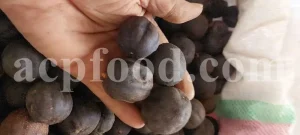
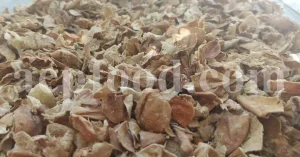
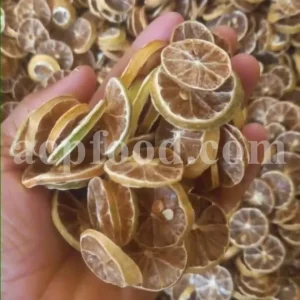

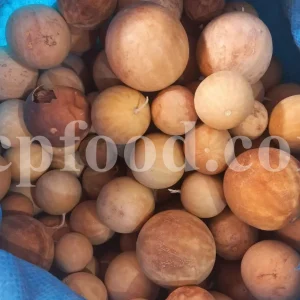
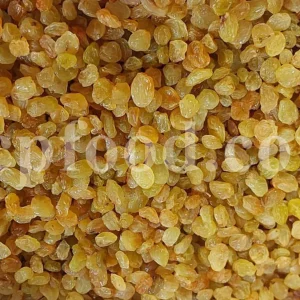
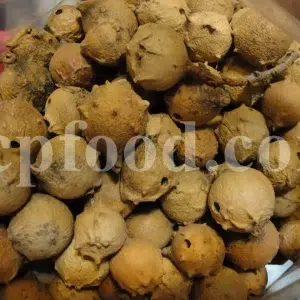
Reviews
There are no reviews yet.